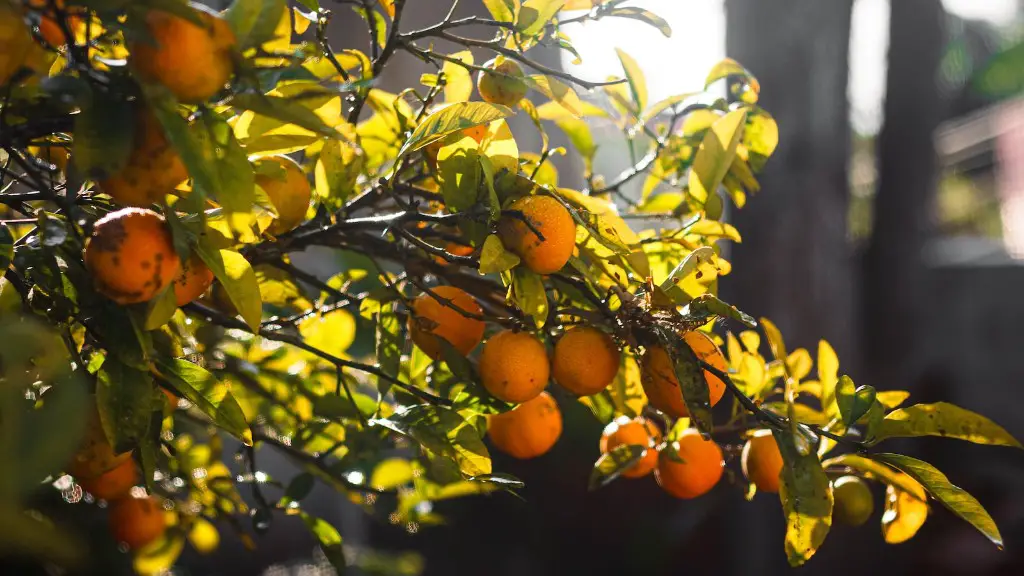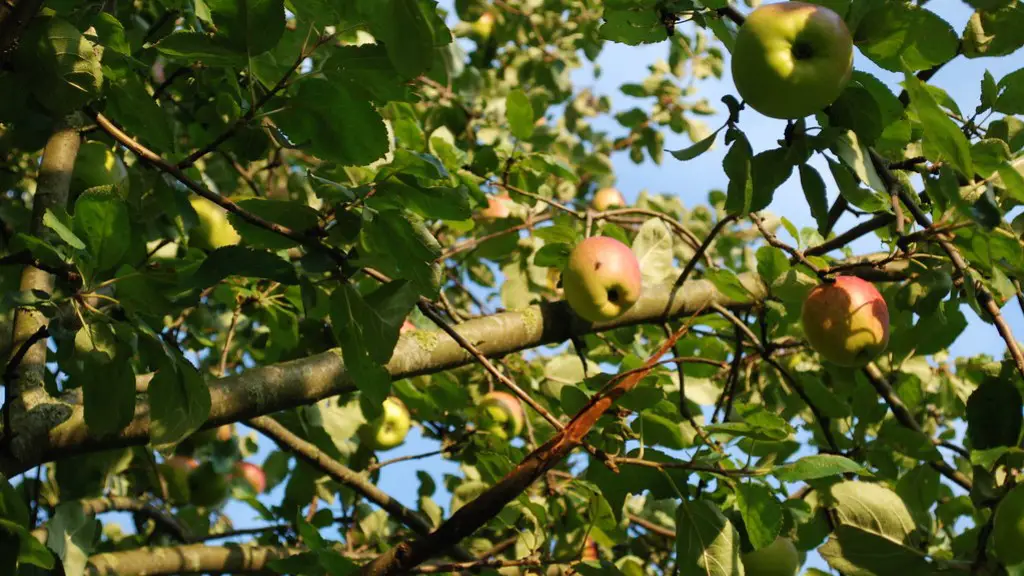Planting a lemon tree in a pot isn’t as complicated as it seems. In this article, we will discuss what size pot is best for growing a lemon tree and other vital information about lemon tree care. First, it is important to understand that the size of the pot you choose for your lemon tree will have an impact on the amount of maintenance and care that the tree needs. Smaller pots need more frequent watering, pruning, and monitoring for pests and diseases in order to thrive. Larger pots allow for greater stability and fewer maintenance requirements.
The size of the pot you select for your lemon tree will also depend on the variety of tree you are planting and the age of the tree. Generally, a pot size of two to five gallons is optimal for any variety of lemon tree. If you are planting a young lemon tree, you should select a pot that is at least fifteen to eighteen inches in diameter. Larger pots are best for more mature trees, as they will provide more space for the roots to grow and develop.
When selecting the right size pot for your lemon tree, there are some other factors to consider. If the pot has a large drainage hole in the bottom, this will help keep your lemon tree well-watered and also help to prevent root rot. The material of the pot can make a difference, too. Plastic pots are a good choice for lemon trees, as they retain moisture better than clay pots. Clay pots are also a good option, however, as they are very durable and can withstand the elements.
It is also important to remember to use the right soil for your lemon tree. Generally, a light and well-draining potting mix that is rich in organic matter is ideal. You can add a few inches of mulch to the top of the soil to help retain moisture and provide nutrients to the tree. Be sure to empty the drainage tray after every watering, as standing water can cause root rot.
Finally, it is important to remember that lemon trees are tropical plants. This means that they need ample sunlight and warm temperatures in order to thrive. Place the pot in an area that receives at least four to six hours of direct sunlight per day, and make sure that there is adequate air flow around the pot. Lastly, make sure to water your tree on a regular basis and be mindful of the temperature of the soil to ensure that your lemon tree stays healthy and vigorous.
Lemon Tree Pruning
Pruning is an essential aspect of lemon tree care. As citrus trees grow, they tend to develop several offshoots, known as ‘water shoots’. If these shoots are allowed to grow unchecked, they can reduce the size and health of the fruit production. Therefore, it is important to prune your lemon tree regularly to keep it in a healthy and productive state.
The best time to prune a lemon tree is in the late winter or early spring. This will give your tree time to heal before the warm weather arrives. When pruning your lemon tree, use pruning shears to remove any water shoots or dead wood. Do not prune more than a third of the tree, as this could damage it. Additionally, avoid pruning during the summer months, as this can cause the tree to become stressed in the hot weather.
When pruning lemon trees, it is also important to use the proper pruning techniques. Start by cutting off any dead, diseased, or damaged branches, then cutting away any water shoots. Make sure that each branch is cut at a slight angle, as this will ensure that the cut branches will heal quickly. Make sure to sterilize your pruning shears before and after use to prevent the spread of disease.
Finally, it is important to keep the area around the tree well-pruned to ensure adequate air flow and sunlight. Remove any limbs or branches that are blocking the sunlight and trim back any vegetation that is blocking the airflow around the tree. This will help to keep your lemon tree healthy and productive.
Fertilization and Maintenance
Fertilizing is another important aspect of lemon tree care. Due to the tree’s tropical nature, it needs to be fed with a balanced fertilizer at least once a month. The best time to fertilize your tree is in the spring or early summer months, when the tree is beginning to show active growth. A slow-release fertilizer should be used, as this will provide a steady supply of nutrients to the tree over time.
If your lemon tree is growing in a pot, you should also monitor the soil for nutrients on a regular basis. Aim to water your tree deeply at least once a week, and use a moisture meter to ensure that the soil has adequate moisture levels. Additionally, provide regular doses of foliar spray throughout the summer months to give the tree additional nutrients.
Lastly, it is important to keep the surrounding area of the tree free of weeds. This will help to improve air flow and provide adequate space for your lemon tree to thrive. Pests and diseases can also be kept at bay by regularly checking the leaves and branches of your lemon tree for any signs of infestation. If any are found, treat the tree with a suitable pesticide or insecticide to eliminate the problem.
Soil Amendments for Lemon Tree Health
To ensure that your lemon tree has access to all the nutrients it needs, it is important to add soil amendments to the soil on a regular basis. Soil amendments can help to improve the structure and fertility of the soil and make it more conducive to lemon tree health. Calcium and magnesium are especially important to add to the soil, as lemon trees are sensitive to magnesium deficiencies.
Adding organic matter to the soil is also beneficial for lemon tree health. Organic matter such as compost, manure, and peat moss help to improve the soil’s structure and can provide valuable nutrients to the tree. Organic matter also helps to increase the soil’s water-holding capacity and helps to protect the root system from disease and pests.
Finally, it is important to monitor the soil’s pH levels regularly. Lemon trees prefer a slightly acidic soil, so aim to maintain a pH of 5.5-7. If the pH is too low, then use a lime-based amendment to help raise the pH. If the pH is too high, use an acidifying amendment to bring the pH level down.
Protecting against Winter Weather
If you live in an area that experiences cold winters, you will need to provide extra protection for your lemon tree. To protect the tree from winter weather, you can wrap it in a burlap or cloth fabric for insulation, or use a plastic sheet to keep the roots from freezing. Additionally, it is important to stop fertilizing your tree in late autumn, as continued fertilizing can damage the roots as the soil nears freezing temperatures.
When the winter weather is approaching, you should also move your lemon tree indoors if you can. While lemon trees don’t necessarily require full sun, the light requirements do increase during the winter months. Therefore, it is best to place the tree in a sunny, south-facing window to ensure it receives enough sunlight during the winter.
In addition to providing adequate light for your lemon tree, you should also keep an eye on the temperature of the room. Lemon trees thrive in warm conditions and will suffer if the temperature dips too low. The ideal temperature for a lemon tree is between 55-75°F (13-24°C). Be sure to maintain this temperature to keep your lemon tree healthy and productive.
Keeping Pests and Diseases at Bay
Pests and diseases can quickly affect the health of your lemon tree, so it is important to keep a regular eye out for signs of infestation or infection. Many common pests and diseases of lemon trees are caused by moisture stress, so make sure to water your lemon tree regularly and thoroughly. Be sure to empty out the drainage tray after each watering to ensure there is no standing water near the roots.
Additionally, inspect your lemon tree regularly for signs of pests, such as aphids and citrus tree beetles. If pests are spotted, treat the tree with an appropriate pesticide or insecticide to get rid of the problem. If you suspect that you have a disease, it is best to contact a professional for an accurate diagnosis and treatment plan.
Finally, make sure to keep the surrounding area of your lemon tree free any weeds or debris. This will help to improve air flow and provide adequate space for your lemon tree to thrive. Additionally, avoid using weed killers and chemical fertilizers near the tree as this could damage the roots.



